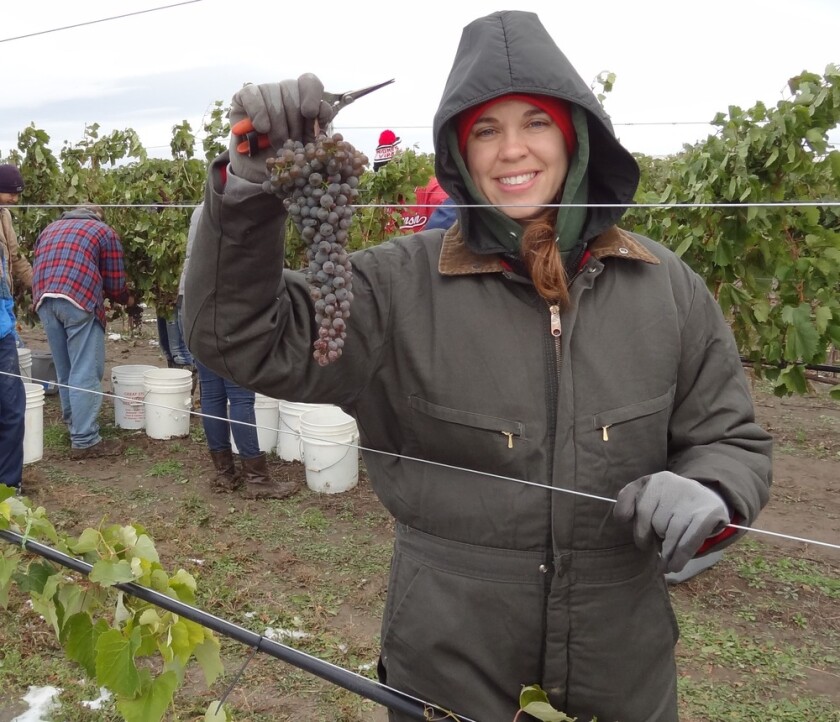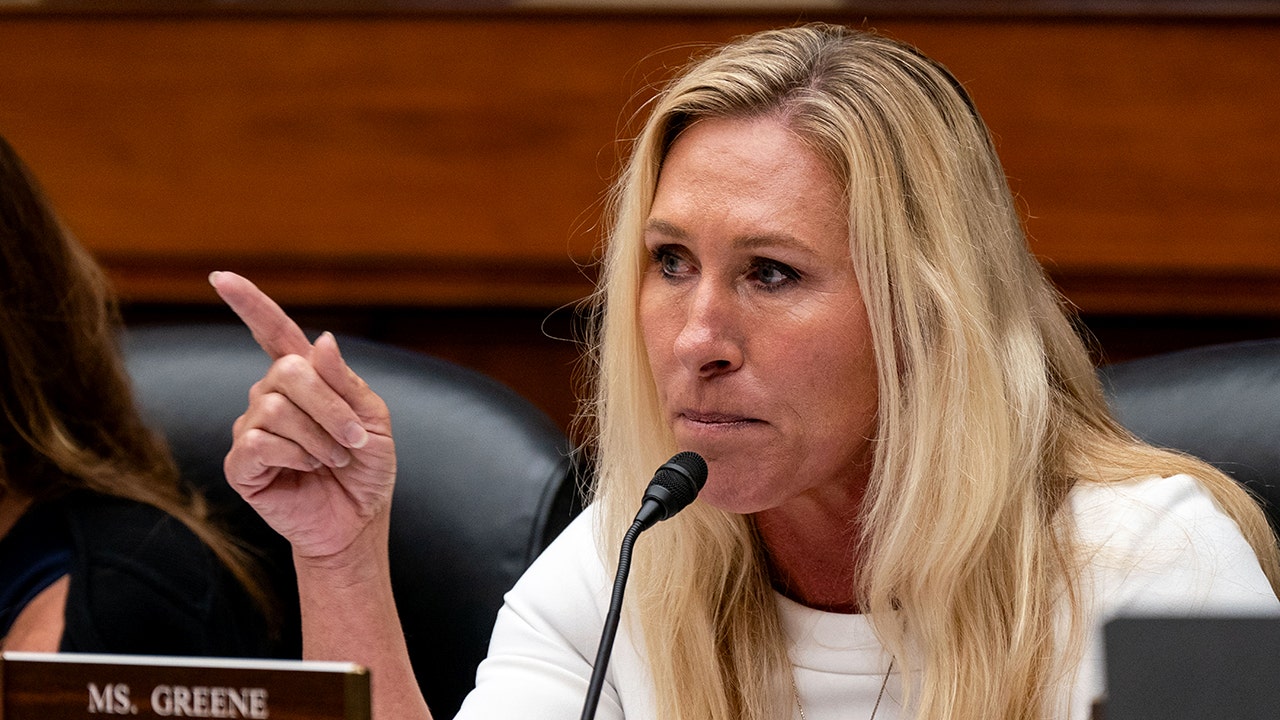North Dakota
Doug Burgum’s support for carbon pipelines could spell presidential campaign trouble in Iowa

FARGO — North Dakota Gov. Doug Burgum has spent a good portion of his time on the presidential campaign trail in Iowa, where he’s been able to leverage his small-town Midwestern roots and familiarity with agriculture.
Of all the Republican presidential candidates, Burgum may be uniquely qualified to campaign in Iowa, which is home to the first contest in the presidential primaries. But his position on one issue of particular importance to rural voters could pose a challenge for his campaign.
Disputes surrounding the construction of carbon dioxide-carrying pipelines are a hot-button issue in Iowa, and Burgum is a big supporter of one of the projects, which could be key for offsetting North Dakota’s climate change-linked greenhouse gas emissions.
In 2021, Burgum made an unusual move for a Republican governor of a top oil-producing state:
He called for North Dakota to become carbon neutral by 2030.
How does a state that produces more than a million barrels of oil a day aim to offset its emissions? By piping in CO2 from other states.
Projects to do just that are happening in Iowa, where three companies are seeking to build pipelines from Iowa ethanol plants to carry liquefied CO2 out of state for storage in an effort to combat climate change.
Iowa-based Summit Carbon Solutions is in the process of developing a 2,000-mile pipeline that would carry emissions from ethanol plants in Iowa across five states to be stored in underground rock formations in North Dakota. Permit discussions with regulators in states along the route are ongoing.
Troy Becker / The Forum
Burgum is one of the project’s biggest cheerleaders. In the past, he defended using eminent domain to make landowners sell access for pipelines to developers. He
defended the practice
at an Iowa campaign event in July, the Des Moines Register reported.
“We wouldn’t have an interstate highway system. We wouldn’t have the transcontinental railroads. We wouldn’t have just about anything in this country (without eminent domain),” the newspaper quoted Burgum as saying. “It’s very difficult to get 100% of people to agree. The important thing is that they have an opportunity in that process to be heard and be fairly compensated.”
Pipeline projects are highly controversial in rural Iowa, and polling suggests the vast majority of Iowans are opposed to the use of eminent domain to build them. A 2023
Des Moines Register poll
found more than 3 in 4 Iowans oppose eminent domain use in carbon-capture pipeline projects.
There’s also been a push in that state’s Legislature to ban the use of eminent domain for those projects. A bill passed in the state’s House earlier this year but never got a hearing in the Senate.
At a campaign event earlier in September,
Burgum clashed with a group of voters
on the pipeline issue, according to an NBC report. One voter accused Burgum of being a supporter of eminent domain, a characterization the governor disputed.
Pipeline opposition has led to unlikely alliances between landowners and environmental activists. Less than 10 years ago, both Iowa farmers and the Sierra Club found themselves opposing the construction of the Dakota Access Pipeline through the state. Now, they’re working together again to oppose the construction of pipelines carrying carbon dioxide out of the state.
Environmentalists oppose the disruptions caused by pipeline construction and see carbon-capture projects as wishful thinking or a ploy by polluters attempting to continue greenhouse gas-emitting activities.
But it’s Iowa farmers and landowners, who tend to lean conservative, whom Burgum needs to worry about in the nation’s first presidential primary next year. According to the Des Moines Register, 72% of Iowa Republicans oppose eminent domain for carbon projects.
Some farmers don’t want their land dug up for pipeline construction, and there’s a chance government approval for projects would give the developers eminent domain rights, allowing them to build without permission.
That hasn’t happened for the carbon pipeline projects in Iowa, but it has in the past for other pipelines, including Dakota Access, and developers could do that again. Summit has told Iowa lawmakers it will need eminent domain to complete the project.
While carbon pipelines don’t run the risk of spilling thousands of gallons of a hazardous substance like oil pipelines do, they aren’t 100% safe. A carbon pipeline explosion in Mississippi sent more than 40 people to the hospital in 2020.
Although there are not many safety incidents with CO2 pipelines, opponents say what happened in Mississippi shows the public should exercise caution. With
billions in federal dollars available for CO2 capture
and storage projects and Biden administration support for thousands of miles of pipeline, networks could grow.
Burgum has downplayed safety concerns about the pipelines in the past, telling the editorial board of The Bismarck Tribune that North Dakota has had pipelines operate safely for decades.
He
told the board
that critics of pipelines are “Trying to turn carbon and CO2 into the devil element on the periodic table,” and that carbon sequestration could actually help solve major environmental problems.

North Dakota
My Heartfelt Christmas Wish To You North Dakota

My Heartfelt Christmas Wish To You North Dakota.
Not a “catchy-clicky” title and I doubt many of my listeners or readers will probably even read this article.
However, I wanted to share something with you that is on my heart. This is so not me, as I’m more the guy who writes about “North Dakota’s 10 most quirky this and that”.
It’s not that I’m not a sensitive guy, because when I was growing up, I was probably too sensitive. I would avoid sad movies, songs, or anything that would spark too much of an emotion.
Yes, you could say my heart has become a bit jaded and cold over the years. It’s not something I’m proud of but more of a defense mechanism.
2024 has probably been one of the most challenging years for my family.
From losing loved ones to family issues to health issues to very challenging financial times, it’s been one of those years where you just can’t catch a break. I’m sure many of you can relate.
As we were attending a Christmas Eve candlelight service last night a young child caught my eye.
She was a cute little toddler who was starting to act up. Something I remember oh so well at church with my little now 20-year-old son.
As her father took her outside the sanctuary to attend to her, I couldn’t help but notice this child’s extremely unfair situation. She had a disability at a year or so old, that none of us could ever imagine. It broke my heart.
This poor child and her family no doubt have a long road ahead of them. As we lit our candles later in the service, I caught the wonder in her eyes, and it couldn’t help but melt my cold heart at the time.
She was perfect and I found myself saying a prayer for this little blonde girl with curly locks and her family.
Her situation also reminded me that I should be thankful for what I have and not what I don’t this Christmas. This is my Christmas wish for you North Dakota, that you will realize the same thing.
Be thankful for who you have around the tree today, not what’s under it.
Merry Christmas to all my listeners and readers. I hope at least a few of you get to read this and it will touch you the same way this little girl touched me on Christmas Eve.
LOOK: Popular Dinners Americans Don’t Make as Often Anymore
From classic casseroles to heaping helpings of beige-on-beige, these beloved American dinner dishes have fallen out of the mealtime rotation.
Gallery Credit: Stephen Lenz
The 11 Best Gooey Caramel Rolls You Will Find In North Dakota
North Dakota
Could a Bismarck woman become North Dakota's 1st saint?

BISMARCK — Christmas Day marks the ninth anniversary of 31-year-old Michelle Duppong’s death. While her family and friends will feel her absence on this day, they also feel the love, kindness and faith she demonstrated during her short life, along with abundant hope that she not only shared while alive but continues to share in death, which is one of the reasons she is slated to become the first person from North Dakota to become a Catholic saint.
Contributed
In June 2022, Bismarck Bishop David D. Kagan announced the opening of a diocesan investigation into Duppong’s “holiness of life and love for God,” officially starting the long and arduous process of canonization to a saint. On Nov. 1, 2022, Kagan deemed Duppong a servant of god.
Duppong is on track to be the first North Dakotan and one of few around the world to be canonized, said Father Tom Grafsgaard, of Hazen, North Dakota. According to Catholic publications, only 11 people from the U.S. have become canonized saints.
“It’s never happened in the history of North Dakota in either (the Bismarck or Fargo) Diocese,” Grafsgaard said. “It’s quite exceedingly rare for this to be happening.”
In the process of canonization, the Catholic Church declares people “saints.” There are three paths to sainthood: to have died as a martyr for Catholicism; if one lived an expression of love and died a rather quick and unexpected death; or if they gave a heroic example of living all the Christian virtues.
The process of canonization is governed by a strict canonical or juridical procedure established by St. John Paul II in 1983.
After Kagan began the process, Duppong’s cause entered the diocesan phase of investigation into her life. The Michelle Duppong Guild was created — a group tasked with promoting an awareness of her life. Officials are poring over Duppong’s writings, work, demonstrations of faith and the great number of lives she touched while alive, which are illustrated through interviews with those who knew her, Grafsgaard said.
Her case will be built up and eventually sent to the Dicastery for the Causes of the Saints in Rome for the Roman Phase of canonization. A Vatican panel will also investigate and determine if Duppong lived a heroically virtuous life. The Dicastery can then issue a “decree of heroic virtue” in which Duppong would be given the new title of “Venerable Servant of God.”
The third step, beatification, then begins. During this phase, it must be proven that one miracle has been granted by God through Duppong’s intercession. If the Pope declares a true miracle occurred, then Duppong would be declared “Blessed.” Last, a ceremony of canonization would take place where the church declares her a Saint in heaven with God.
“The process is very long,” Grafsgaard said. “I often say, ‘It takes as long as it takes.’ ”

Contributed by michelleduppong.org
Michelle Christine Duppong was born Jan. 25, 1984, the fourth of six children to parents Ken and Mary Ann Duppong. She grew up on the family farm in Haymarsh, North Dakota, where her parents said she loved to help with chores, including caring for sheep but especially gardening, mowing, pruning, weeding, harvesting and canning, according to her mother.
Duppong was named valedictorian and president of her senior class and later attended North Dakota State University, where she earned a degree in horticulture.
After earning her degree, she became a FOCUS missionary at four college campuses, including the inaugural year at the University of Mary, mentoring college students to draw them deeper into the faith. FOCUS is an apostolate dedicated to evangelizing college and university students.
In 2012, she became the director of faith formation for the Bismarck Diocese, where she led parish missions, launched a podcast and spearheaded a three-day Eucharistic conference that drew thousands to the Bismarck Civic Center in 2013.
In the fall of 2014, Duppong was experiencing sharp abdominal pains that doctors initially thought were ovarian cysts, a common but painful issue for women that will sometimes dissolve and go away without major medical treatment. But by December, the pain was unrelenting, and an outpatient surgery was scheduled that month to remove the cysts.
According to Mary Ann Duppong, surgeons were “shocked to find” Michelle Duppong’s abdomen was “full of stage four cancer.”
Doctors expected the young woman to die within months, and hospice care was recommended.
“Michelle was not one to blame anyone for anything,” Mary Ann Duppong said. “Her attitude was, ‘If God wants me to go through this, I will go through this.’ “
Despite the diagnosis, Michelle Duppong continued her life for nearly a full year.
According to the website that outlines the canonization process for Michelle Duppong and its status, she told one of the sisters providing hospice care that she believed she would pass on Christmas Day. Michelle Duppong died at 11:23 p.m. on Dec. 25, 2015.
Shortly after Bishop Kagan initiated the process for Michelle Duppong’s canonization, U.S. bishops affirmed their support for the cause’s advancement.
In this first stage, the primary focus is to raise awareness of Michelle Duppong and the push for her sainthood by spreading as much information about her and her life as possible, which is done through the creation of a guild and much of which can be found at
www.michelleduppongcause.org.

Contributed.
In January, a FOCUS-produced documentary titled “Thirst for Souls: The Michelle Duppong Story,” was screened at a FOCUS convention in St. Louis. Afterward, Michelle Duppong’s parents were inundated for hours with comments about how much the movie and Michelle had influenced viewers.
While one cannot necessarily predict when or if Michelle Duppong will become a saint, Grafsgaard said a bishop must believe canonization is likely to begin the process.
“For a bishop to initiate a cause, there should be a well-founded hope for its success,” he said. “There certainly was reputation in her life, and she continues to have it in her death.”
North Dakota
Obituary for Grace Mary Kegler at Gregory J. Norman Funeral Chapel

-
/cdn.vox-cdn.com/uploads/chorus_asset/file/24924653/236780_Google_AntiTrust_Trial_Custom_Art_CVirginia__0003_1.png)
/cdn.vox-cdn.com/uploads/chorus_asset/file/24924653/236780_Google_AntiTrust_Trial_Custom_Art_CVirginia__0003_1.png) Technology5 days ago
Technology5 days agoGoogle’s counteroffer to the government trying to break it up is unbundling Android apps
-

 News6 days ago
News6 days agoNovo Nordisk shares tumble as weight-loss drug trial data disappoints
-

 Politics6 days ago
Politics6 days agoIllegal immigrant sexually abused child in the U.S. after being removed from the country five times
-

 Entertainment6 days ago
Entertainment6 days ago'It's a little holiday gift': Inside the Weeknd's free Santa Monica show for his biggest fans
-

 Lifestyle6 days ago
Lifestyle6 days agoThink you can't dance? Get up and try these tips in our comic. We dare you!
-

 Technology1 week ago
Technology1 week agoFox News AI Newsletter: OpenAI responds to Elon Musk's lawsuit
-
/cdn.vox-cdn.com/uploads/chorus_asset/file/25672934/Metaphor_Key_Art_Horizontal.png)
/cdn.vox-cdn.com/uploads/chorus_asset/file/25672934/Metaphor_Key_Art_Horizontal.png) Technology1 day ago
Technology1 day agoThere’s a reason Metaphor: ReFantanzio’s battle music sounds as cool as it does
-

 News2 days ago
News2 days agoFrance’s new premier selects Eric Lombard as finance minister


















